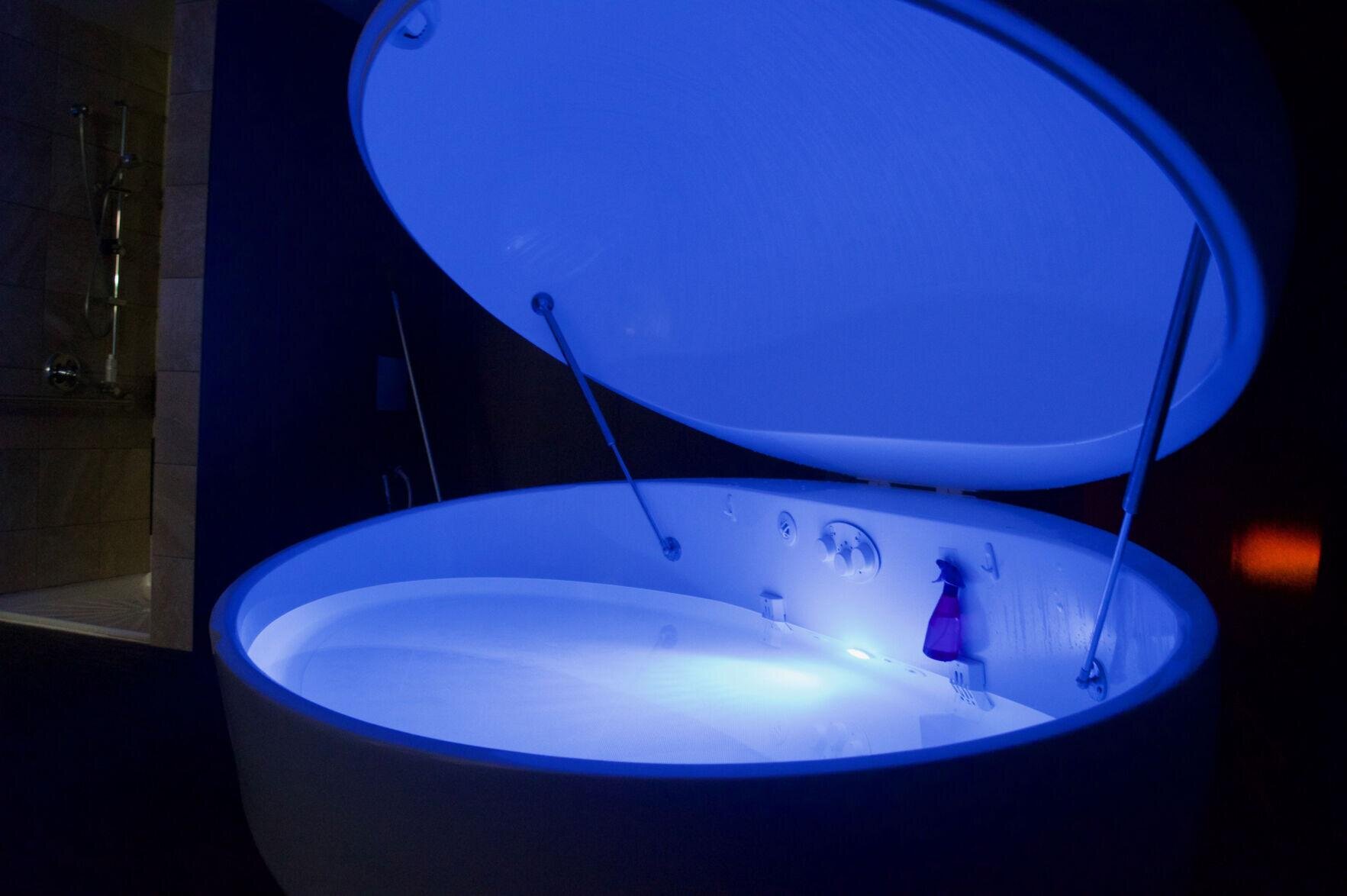I’m looking for a little peace and quiet
One woman's experience in a float tank
As someone who is a chronic overthinker and craves control, this last year has been, simply put, exhausting. I often find myself paralyzed by fearful thoughts of what the future will hold and when I will be able to regain power over my life. These questions run on a constant loop. Worry lives in my bones.
But I started realizing that those issues are out of my hands. What happens, happens.
Recognizing that pandemics and the future are out of my control, I decided to turn to things that were within my power. I started going to therapy, and I attempted different forms of exercise to try and tame my overthinking tendencies.
And I tried them all — meditation, yoga, pilates, barre. But none of them gave me the peace that I was looking for. I found solace in running and the ability it offered to distract myself from my own thoughts (mostly because I was more concerned with when I would be able to stop running), but still, I craved the ability to quiet my thoughts in a less physically taxing way.
So I turned to something that always felt out of touch. It seemed too extreme, too luxurious, and, frankly, ineffective:
I floated in a tub of salty water in complete darkness.
I had heard rumors about the healing effects of sensory deprivation tanks and the way they revert you to a fetus-like state. Thinking about how unaware I was of the world as a fetus, I became set on trying.
I went to Float Seattle, a wellness studio that offers not just floating but also saunas and cryotherapy. They have three different locations in the Seattle area. I felt nervous. I was also full of preconceived notions ranging from “this will be the most life-changing experience I’ve ever had” to “this will not work at all.”
Right from the start, the facilities had a calming effect. They have a place where you can make a cup of tea, and the lobby features plants and wood accents. Its energy echoed like a spa: zen, clean, and peaceful.
Inside the float room sat a clam-shaped chamber that glowed a deep indigo color. It seemed like a portal into a different universe, and I was nervous about what it would hold.
Float Seattle, specializing in sensory deprivation therapy, is located in Greenwood, Bellevue, and Greenlake. Each float tank has one thousand pounds of epsom salt dissolved into the water, creating a weightless environment.
Photo: Hannah Murray
Floating tanks are equipped with optional blue lighting, a starry projection on the ceiling of the tank, and an aux cord. Float Seattle staff recommend turning the lights off and floating in silence for the full sensory deprivation experience.
Photo: Hannah Murray
The float guide gave us a rundown on everything: how to work the tank, turn on a projection of stars in the sky, or play music through the speaker. I wanted the full experience of removing all distractions, so I opted for complete silence and darkness.
After showering and prepping by removing my contacts and inserting earplugs, I was ready to float.
I stepped into the 10 inches of shallow water that had been filled with 1,000 pounds of dissolved Epsom salt to make you completely buoyant.
Laying back, closing the lid, I felt completely removed from the world. I had the lights that mimic a night sky on for a minute before I turned them off and laid back to adjust to the new environment.
That water was perfectly neutral. They control the temperature, so you feel neither warm nor cold. When I turned off the light and laid back, it was completely dark in a way that humans rarely experience. Arms above my head, I felt my body find a comfortable resting position floating with ease. I was inside the tank for an hour.
In the tank, time feels both long and short, fast and slow. Time almost doesn't exist. You can't fully grasp how the day is moving away from you or not. There is no phone, there is no sunlight disappearing behind the horizon — only darkness.
I remember thinking about many random things, trying to quiet my thoughts. There were moments when I got into a groove, where my thoughts slowed down and I started to lose myself to peacefulness I was experiencing. But then, just as easily, I slipped out of it. My expectation that I would easily cease thinking once I entered the tank was proved wrong.
According to Andrew Loppnow, the owner and manager at Float Seattle, that is a common misconception.
“It's one of the most common expectations going in that people have,” Loppnow said. “There is no on-off switch for your brain. It's just not possible.”
He informed me that people often go to the float tanks to think. It’s a space where you can take away the distractions of the outside world, of a phone, of other people, and fully focus on your mind. Floating isn't about silencing your thoughts, but about crafting a more productive, healthier way of thinking. Like most things, the more you do it, the better you will get.
“It's not about having no thoughts,” Loppnow said. “It's about cultivating the space in between those thoughts, because that is what will allow you … to be less reactionary to the world and to distractions and just things that come up. You'll have that bunker space to take a breath and respond mindfully [and] appropriately to the situation.”
Loppnow suggests going in with an intention: setting a goal for what you are hoping to get out of your float, but also letting your thoughts happen as they come to you. And recognizing that like with most things, every float will be different.
“It's different for every person. It's also different on the day, on the time of day, whatever happens, to be going on in your life at that moment,” Loppnow said. “It's pretty important [to set] some kind of intention for your float session, [but] ultimately there's always an element of letting go and surrendering to whatever is going to come up.”
When you float, it's worth reframing your thinking and utilizing the float tank as a tool to process what you are feeling. This experience is a rare chance to have the ability to fully focus on yourself without any other distractions.
There is no right or wrong way to float. And it's not regimented as other forms of exercise. While Loppnow suggests that it may take multiple floats to find your groove, it doesn't necessarily need to be something you do once a week or every day. But consistency is also key. To reap the deep benefits that accompany this type of therapy, you need to keep coming back.
“It is actually something that you can form a very transformational life-changing practice around,” Loppnow said. “A lot of people come to float tanks to try to heal from injuries.”
If you are feeling overwhelmed, constantly stimulated, and stressed, turning to a float tank may be your greatest escape.
“We're not meant to be in fight-or-flight mode constantly,” Loppnow said. “It doesn't matter how you're wired. We still have nervous systems that need to rebalance and reset.”
Like with everything, the experience of floating is different for everyone. I will definitely return to the salty water and try to learn to embrace my thoughts rather than fear them. Maybe silence isn't the answer, but rather, deeper introspection.



